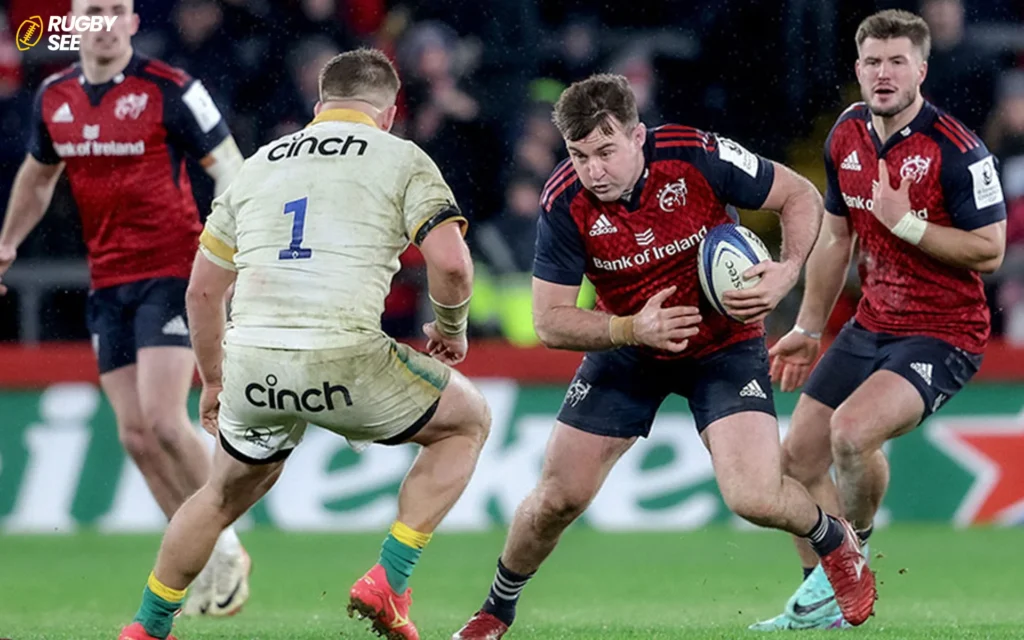In recent years, the question of whether rugby league is dying has sparked considerable debate among fans, players and pundits. This article from Rugbysee aims to shed light on the state of rugby league, examine its popularity, challenges and efforts to ensure its future. With a sport as dynamic and deeply rooted in its communities as rugby league, the answer is not so simple.
The Current State of Rugby League
Rugby league has a rich history, originating in the late 19th century in Northern England. It quickly became popular, with its distinct set of rules and fast-paced gameplay. Today, it enjoys a strong following in countries such as Australia, England, and New Zealand, with professional leagues and international competitions that attract significant audiences.
However, the sport faces challenges. Media coverage, competition from other sports, and financial stability are concerns that have led some to question rugby league’s viability. The digital age has transformed how sports are consumed, with rugby league competing for attention in a crowded market.
Popularity and Engagement
One of the key indicators of the health of any sport is its ability to attract and engage fans. Rugby league has a loyal fan base, with clubs that boast generations of supporters. Attendance at matches and viewership figures, particularly for marquee events like the NRL Grand Final and the State of Origin series in Australia, remain strong.
Social media and digital platforms have opened new avenues for engagement, with clubs and leagues leveraging these tools to reach fans worldwide. Initiatives like the NRL’s digital network and the Super League’s partnership with streaming services are examples of rugby league adapting to changing media consumption habits.

Financial Health and Sponsorship
Financial stability is crucial for the sustainability of any sport. Rugby league has faced its share of financial challenges, with some clubs experiencing significant difficulties. However, substantial television rights deals, particularly in the NRL, have provided a lifeline, injecting much-needed funds into the sport.
Sponsorship deals and commercial partnerships also play a vital role in the financial health of rugby league. Brands continue to see value in associating with the sport, drawn by its passionate fan base and community engagement.
Development and Global Expansion
For rugby league to thrive, it must continue to develop at the grassroots level and expand its reach globally. Efforts to introduce the sport to new markets and support emerging rugby league nations are ongoing. The Rugby League World Cup has been instrumental in showcasing the sport on the international stage, featuring teams from across the globe and if you want to know Old age of Rugby and Football read Is Rugby Older Than Football? An In-depth Analysis.
Development programs aimed at young players are crucial for nurturing the next generation of talent. These programs, coupled with efforts to increase participation among women and diverse communities, are essential for the sport’s growth.
Challenges and Opportunities
Rugby league, like any sport, faces challenges. Competition from other sports, changing consumer behaviors, and the need for financial sustainability are among the most pressing. However, these challenges also present opportunities for innovation and growth.
The sport’s governing bodies and stakeholders are aware of the need to adapt. Initiatives to improve the fan experience, expand digital engagement, and explore new markets are underway. The potential for rugby league to grow, particularly in North America and the Pacific region, is significant.
While discussions around the health of rugby league often highlight its challenges, it’s equally important to focus on the strategic moves and innovations that are shaping its future. The evolution of rugby league is not just about overcoming obstacles but also about seizing new opportunities to ensure its growth and sustainability.

Grassroots Development: The Foundation for Growth
At the heart of rugby league’s strategy for growth is a strong emphasis on grassroots development. By investing in youth leagues, coaching clinics, and school programs, rugby league aims to cultivate a passion for the sport from a young age. These initiatives are crucial for developing future talent and ensuring a steady influx of players into the sport. Moreover, grassroots programs serve to strengthen the community bond with rugby league, fostering a lifelong commitment among participants and spectators alike.
Embracing Technological Advancements
The digital revolution has transformed the sports industry, and rugby league is no exception. Embracing technological advancements, the sport has introduced innovative ways to engage fans and enhance the viewing experience. From live streaming of games to interactive fan engagement apps, rugby league is leveraging technology to reach a wider audience and connect with fans in new and exciting ways. Additionally, technology plays a crucial role in player development and performance analysis, helping teams gain a competitive edge.
Expanding International Horizons
Expanding rugby league’s footprint on the global stage is another key area of focus. Efforts to introduce the sport in new regions are gaining momentum, with international exhibitions and development programs aimed at raising awareness and building a fan base in non-traditional rugby league countries. The sport’s international governing body, the International Rugby League (IRL), plays a pivotal role in this expansion, working to establish competitive leagues and support emerging nations. These efforts are not only important for the growth of rugby league but also enrich the sport by bringing diverse cultures and playing styles into the fold and if You want to know about Popularity Of Rugby read which rugby is more popular.
Women’s Rugby League: A Growing Force
The rise of women’s rugby league is another positive development, with female participation rates increasing significantly. The establishment of professional women’s leagues and the inclusion of women’s competitions in high-profile events like the Rugby League World Cup reflect the sport’s commitment to gender equality. Women’s rugby league is not only expanding the sport’s audience but also inspiring the next generation of female athletes to take up the game.

Is rugby league dying? The evidence suggests otherwise. While the sport faces challenges, it also possesses a resilient and passionate community, a commitment to innovation, and opportunities for expansion. Rugby league’s ability to adapt to the changing sports landscape will be crucial for its future success.
As fans, players, and stakeholders look forward, there is a sense of optimism about rugby league’s potential. The sport’s deep-rooted community ties, exciting gameplay, and international appeal position it well for the future. By addressing its challenges head-on and leveraging its strengths, rugby league can not only survive but thrive in the years to come.










